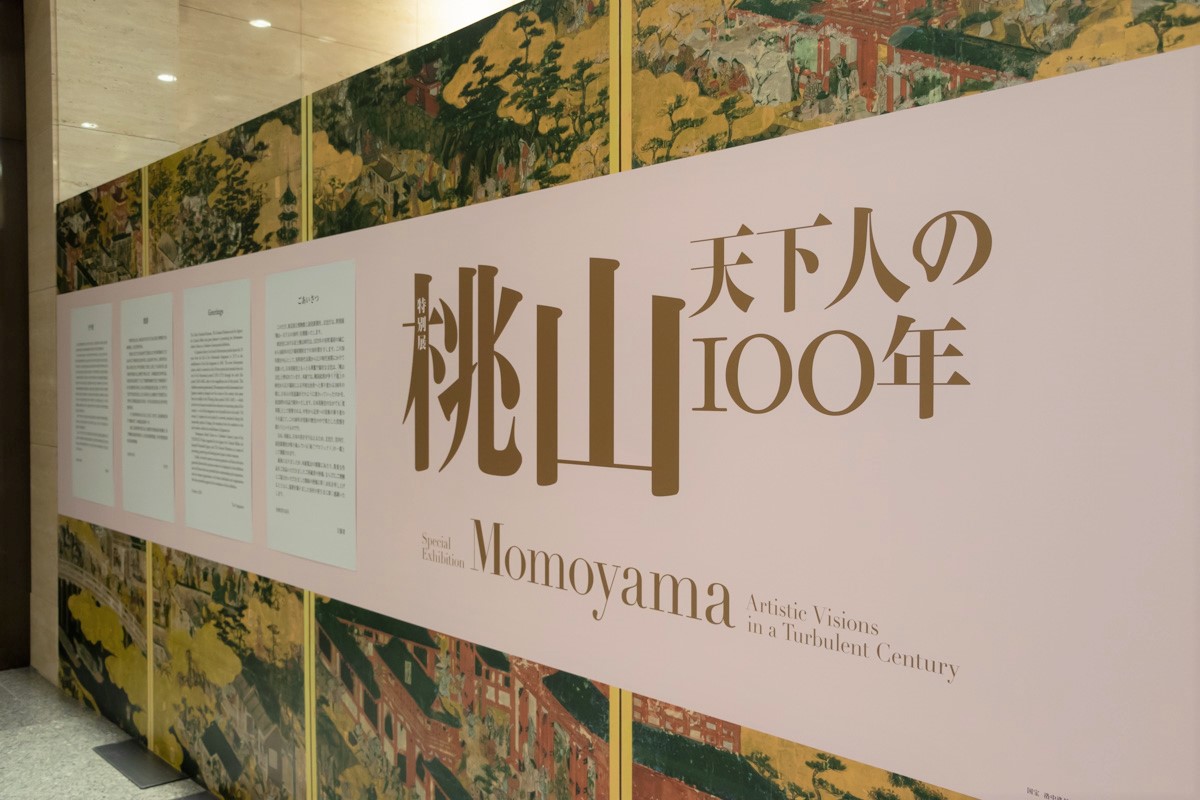
During the period from October 6th (Tuesday) to November 29th (Sunday), 2020, a special exhibition "Momoyama-100 Years of the World" is being held at the Tokyo National Museum Heiseikan in Ueno, Tokyo. ..
The other day, I participated in the press preview held earlier, so I will report on the exhibited works and the state of the venue.
The special exhibition "Momoyama-100 Years of the World" is such an exhibition

The Azuchi-Momoyama period lasted for 30 years from the fall of the Muromachi Shogunate in 1573 to the opening of the Edo Shogunate in 1603. It was a time of rapid change, when Japan changed from the turbulent era of the rise of Sengoku warlords to the era of peace by the Edo Shogunate.
"Momoyama Art", which is said to be the most magnificent and splendid in the history of Japanese art, has blossomed.
The special exhibition "Momoyama-100 Years of the Tenkajin" represents the aesthetic sense of the Japanese people who changed during the 100 years from the end of the Muromachi period to the beginning of the Edo period, centered on the Azuchi-Momoyama period. This is an exhibition where you can check out about 230 works of art.
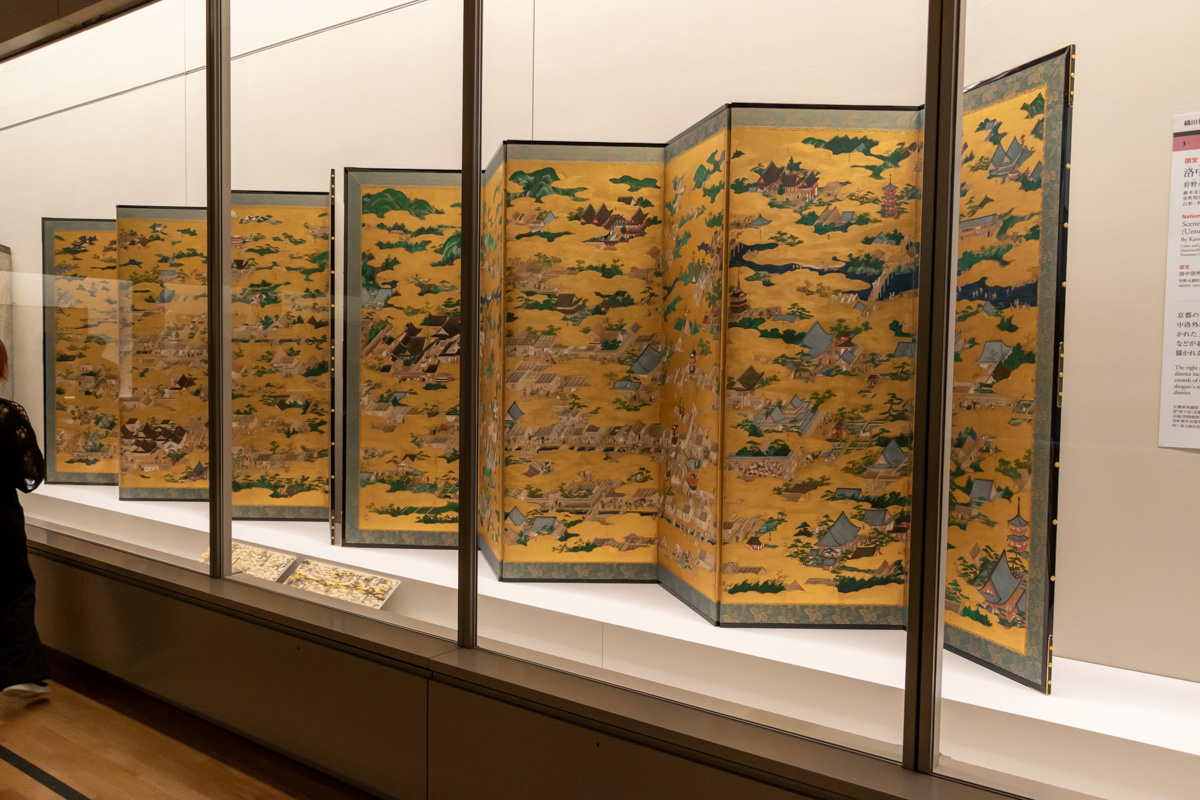
National Treasure Eitoku Kano 《Rakuchu Rakugaizu Rakuchu (Uesugi Family Book)》 Muromachi period, 1565 Yamagata, Yonezawa City Uesugi Museum Early Exhibition Oda Nobunaga is said to have sent to Uesugi Kenshin
Exhibition points ① National treasures and important cultural properties are packed!
In this exhibition, more than 100 national treasures and important cultural properties are exhibited in the first and second semesters . Selected masterpieces, each of which can be the centerpiece of the exhibition, are gathered at this Tokyo National Museum from all over the country.
Famous works such as "Rakuchu Rakugai Zoufu (Uesugi Family Book)" and "St. Francis Xavier Statue" that you have seen in textbooks are lined up. In addition, items related to Nobunaga Oda and Ieyasu Tokugawa are lined up, and it may be said that this is an exhibition that Sengoku fans would like to see at least once.
Exhibition points ② Check it out! Exhibited works change in the first half and the second half
Please note that this exhibition is divided into the first half and the second half, and a considerable number of works will be replaced .
・ The first half exhibition will be from October 6th (Tuesday) to November 1st (Sunday).
・ The second half of the exhibition will be from November 3rd (Tuesday / holiday) to November 29th (Sunday).
Some works will be exhibited for the entire period, some will be exhibited only in the first half, only in the second half, and some will be exhibited only for a specific period, so if you absolutely want to see some works, it is recommended to check the exhibition period in advance. is. Please check the official website for details on changing exhibits.
In this article, we will mainly introduce works that can be viewed in the previous term.
Exhibition work introduction
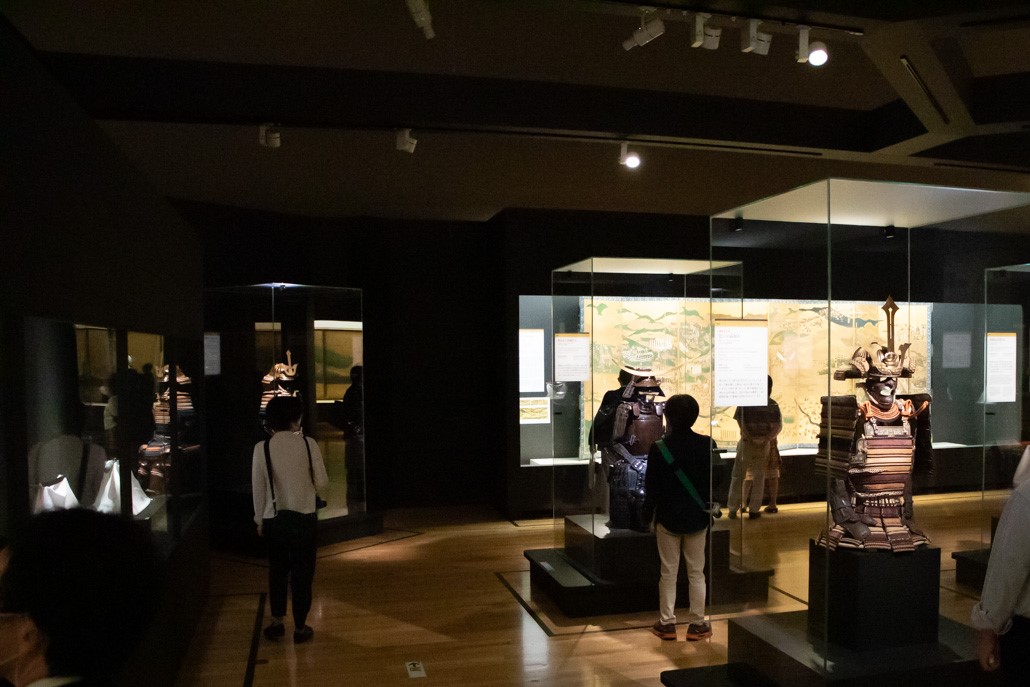
Exhibition scenery
From here, I will introduce some of the works that can be viewed during the exhibition period of the previous term with photos.
■ Pickup ① Obstacle painting
There is a wide variety of exhibits such as paintings, tea utensils, kimonos, swords, armor, and furniture such as suzuri-bako, but the most notable are the large-screen paintings such as obstacle paintings . With the impression that he is putting a lot of effort into it, in both the first and second semesters, a large number of masterpieces by painters representing the Azuchi-Momoyama period, such as Eitoku Kano, Tohaku Hasegawa, and Chokuan Soga, are collected.
In an era when the momentum for unification of the world was increasing, economic activities and cultural exchanges in each region became active, and the world of people was further opened by coming and going overseas. Gorgeous and magnificent art born as if reflecting the spirit of the time. It can be said that disability painting is a genre in which the size of the scale can be felt most frankly.

Important Cultural Property Tosa Mitsumochi 《Hiyoshi Sanno Gion Matsuri Ryofu》 Muromachi period, 16th century Tokyo Suntory Museum of Art Early exhibition
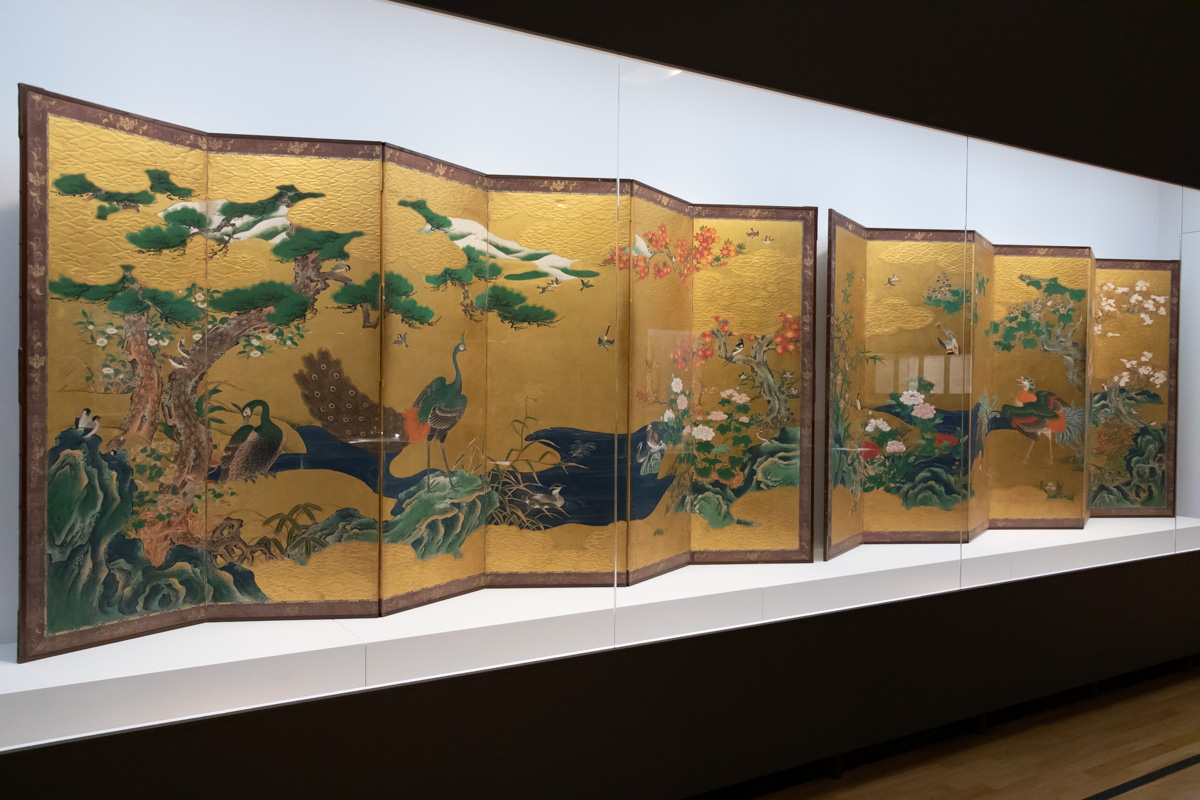
Den Kano Eitoku Brush "Four Seasons Bird-and-Flower Painting" Azuchi-Momoyama Period, 1581 Hyogo, Hakutsuru Museum Exhibited from October 6th to 25th
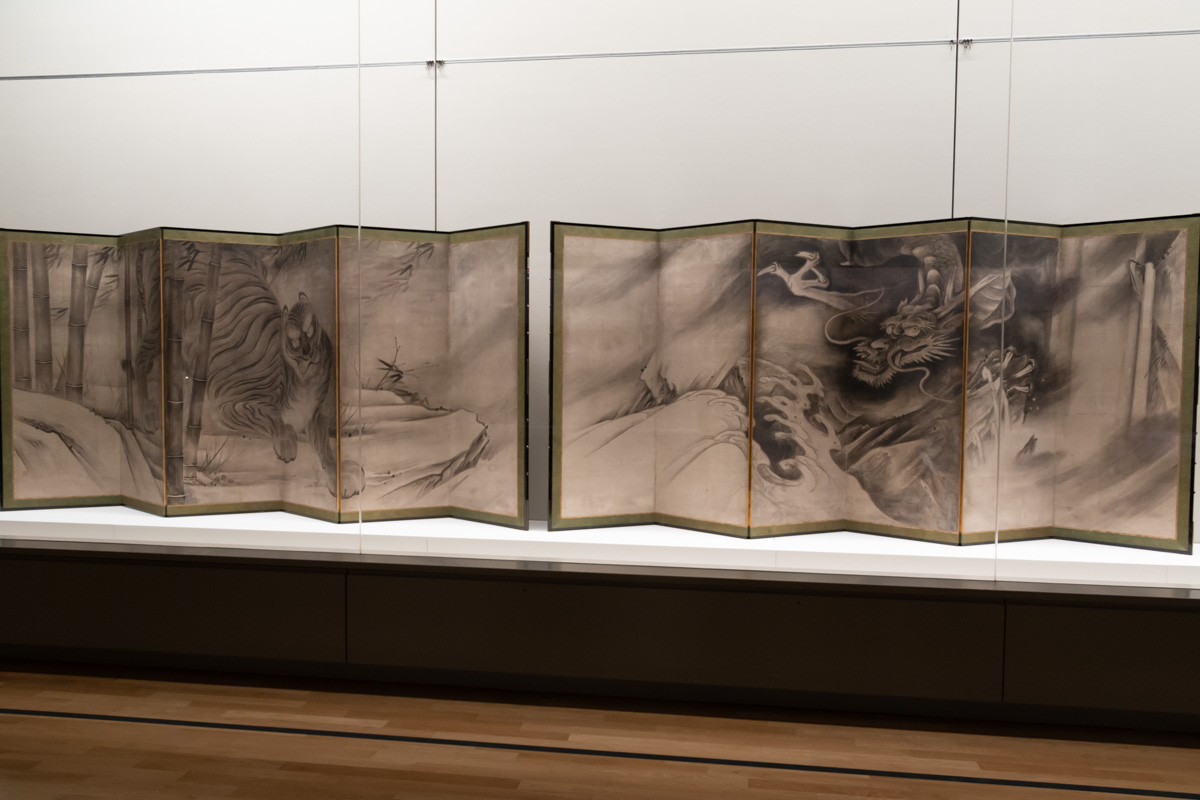
Chokuan Soga 《Ryutorazu Ryofu》 Azuchi-Momoyama-Edo period, 16th-17th century Tokyo National Museum Early exhibition
A dragon and a tiger drawn on one side of each of the six songs and one pair. "Ryutorazu Ryofu" by Soga Chokuan, who specializes in ink painting, is a Ryu-Tora-zu Ryofu painting that was so powerful that it competed for one or two in the exhibition in the previous term. It is fantastic and intimidating, and is full of magnificence typical of the Azuchi-Momoyama period.

National Treasure Eitoku Kano 《Cypress Trees》 Azuchi-Momoyama period, 1590 Tokyo National Museum Early exhibition
The trunk and branches, which are shaped by a speedy brush stroke and spread through the screen, are full of dynamic vitality despite being a plant, and are like a dragon. "Cypress Trees" by Eitoku, who established the large painting style, is rough and approaches the viewer with an overwhelming presence.
■ Pickup ② Armor armor
During the Azuchi-Momoyama era, when the battle continued, weapons and armor also developed significantly in order to win the battle. For example, the military commanders should actively use the practical sword "Uchigatana", which was popular mainly among the people, with elaborate taste. It was also during this period that "Toseigusoku", which makes the whole body armor uniform, appeared.
The military commanders showed their status and personality by giving various decorations and ingenuity to their equipment while emphasizing practicality. At the exhibition, you can appreciate such works that you can feel the way of life of the warlords at that time.
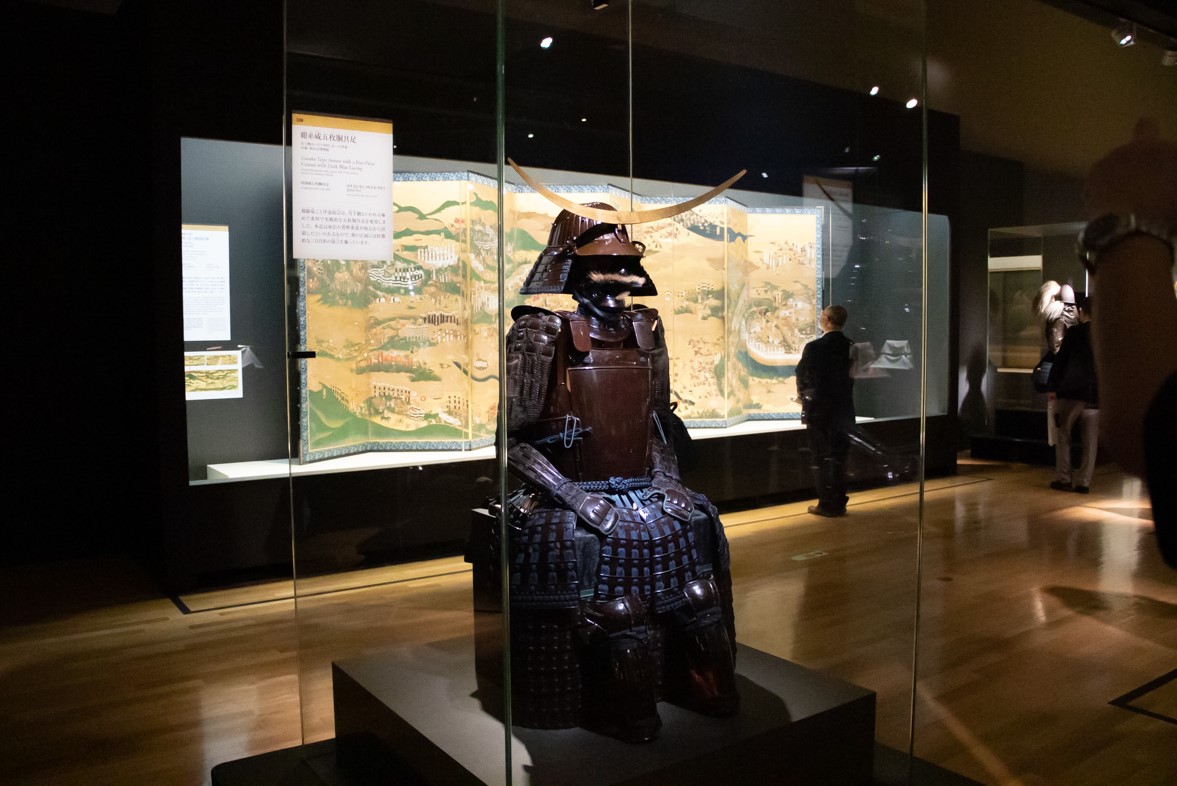
《Konito Wei Five-piece Toseigusoku》 Azuchi-Momoyama-Edo period, 16th-17th century Miyagi, Sendai City Museum full-term exhibition

Important Cultural Property 《Konito Wei Nanbando Toseigusoku》 Azuchi-Momoyama-Edo period, 16th-17th century Tokyo National Museum full-term exhibition
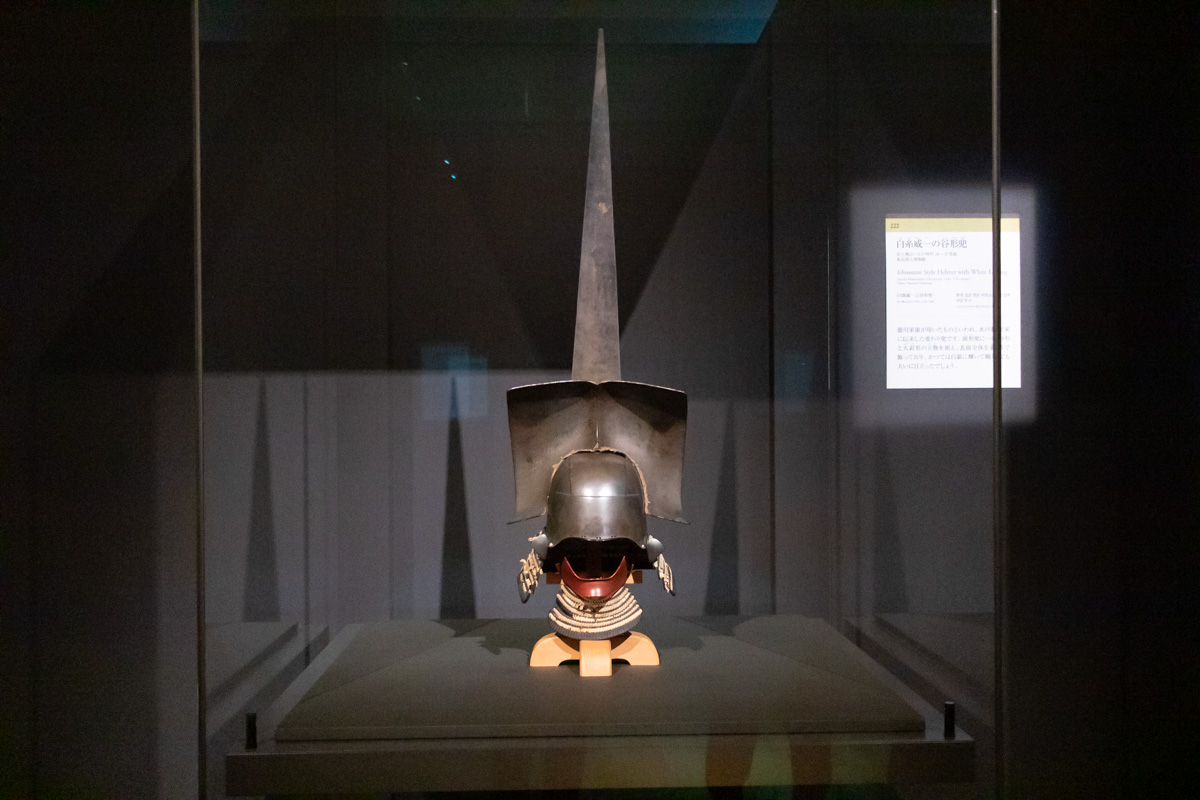
《Weiichi Shiraito's Tanigata Helmet》 Azuchi-Momoyama-Edo period, 16th-17th century Tokyo National Museum full-term exhibition
The head that is said to represent the cliff of Ichi-no-Tani, which was the setting for the "Battle of Ichi-no-Tani", which is especially famous in the Genpei War, and the large nail-shaped one that is over 90 cm in length and is inserted so as to rise toward the heavens Backstage. "Tanigata Helmet of Weiichi Shiraito" is a strange helmet that is said to have been handed down from Ieyasu Tokugawa to the Mito Tokugawa family.
The large nail, which looks like a horn, is a motif favored by military commanders as it pierces the enemy. Originally, it is said that silver foil was pressed all over, and together with this menacing modeling, it is possible to imagine how inspiring the wearer's heart.
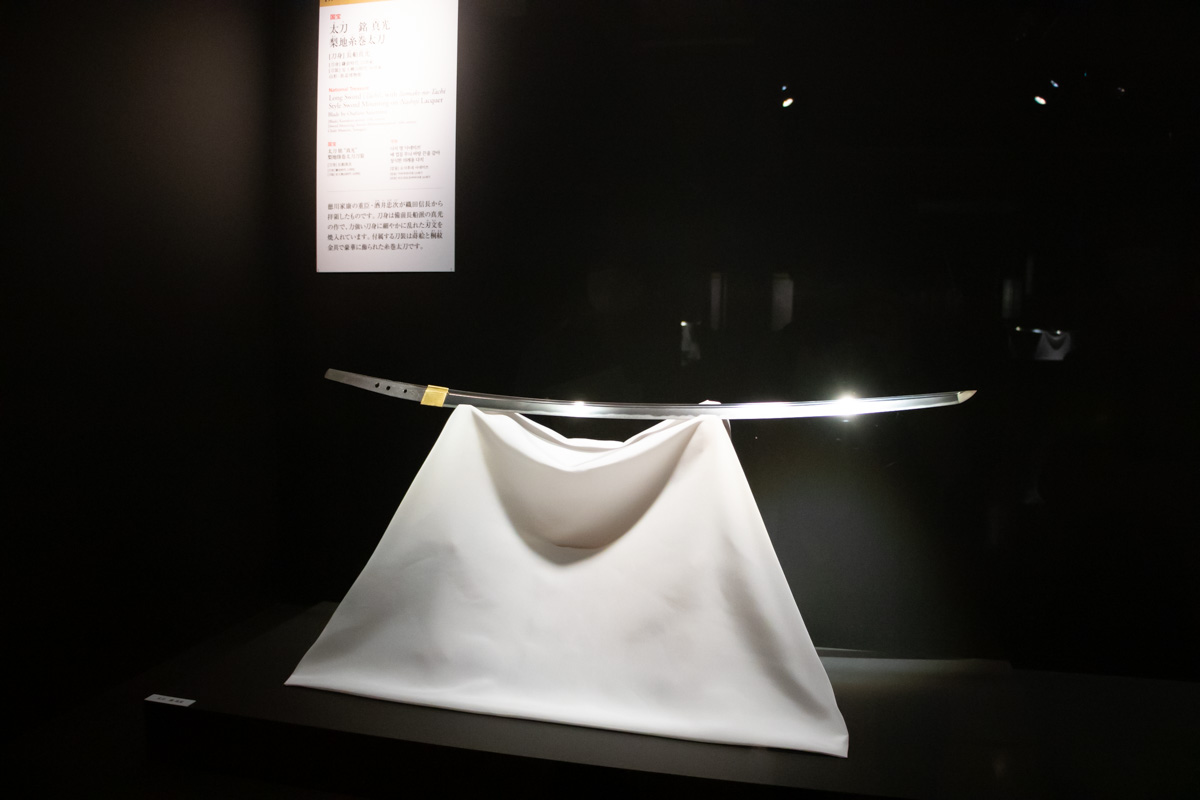
National Treasure [Sword Blade] Masamitsu Nagafune 《Tachi Name Shinko》 Kamakura Period, 13th Century [Swords] 《Nashiji Itomaki Tachi》 Azuchi-Momoyama Period, 16th Century Yamagata, Jido Museum Full Period Exhibition
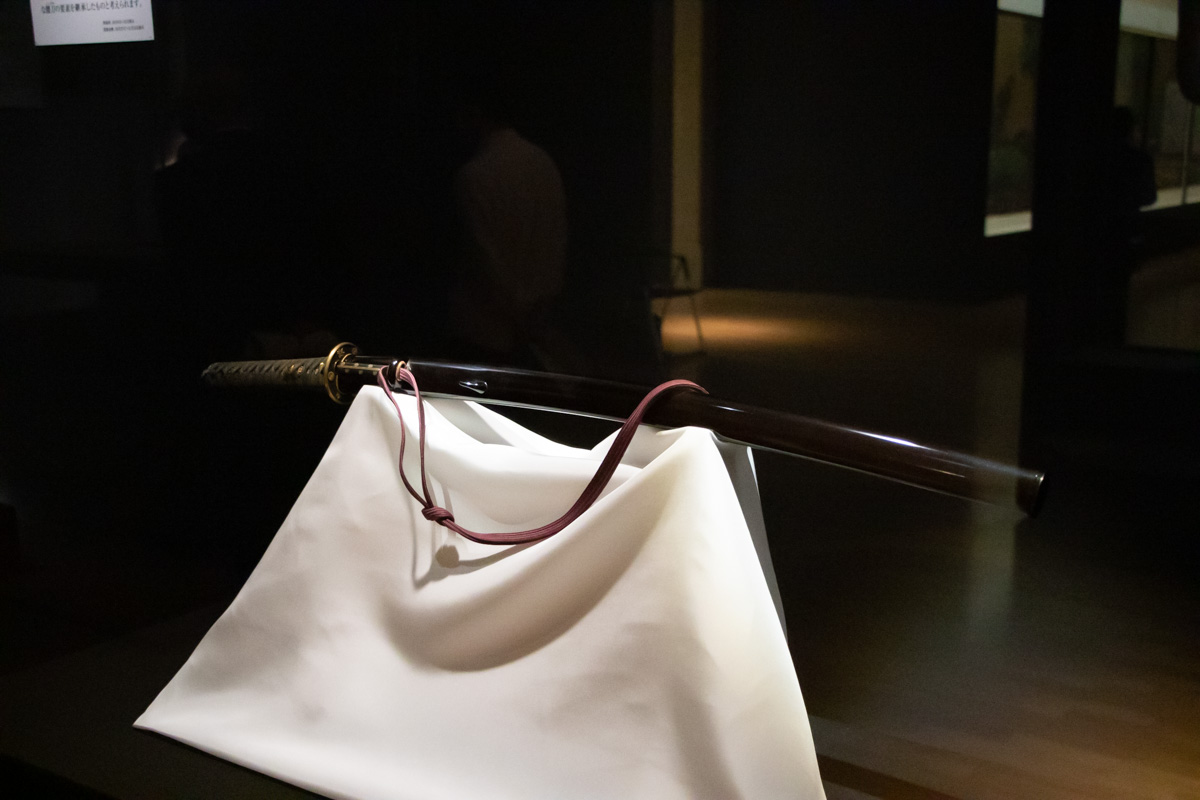
Important Cultural Property "Black Lacquer Uchigatana" Exhibited from October 6th to 25th in the 17th century during the Edo period
This "black lacquer sword" is a sword fitting made to accommodate the famous sword "Masamune Honjo", which is said to have traveled the Tokugawa family for generations. This is the first time to exhibit at the exhibition!
"Uchigatana" was developed during the Azuchi-Momoyama period, but since the expression of this sword has been traditionally made since the Muromachi period, it is a transitional period of history where you can confirm the intersection of innovation and tradition. It is a gem reminiscent of.
The cool black lacquer of the scabbard and the elegant golden decorations such as chrysanthemums and paulownia decorated in three places made me feel elegance.
■ Pickup ③ Works related to Nanban art
Although it is not a genre of works such as paintings and armor, the existence of Nanban art is also indispensable for talking about the beauty of the Azuchi-Momoyama period.
From the Christian mission by Francis Xavier, the cultural and economic exchanges with foreign countries that flourished due to the traffic of Portuguese and Spanish ships, and the start of the isolation system. It was during this period that the situation changed drastically in relation to Western countries. Of course, it had a great influence on the world of art.
Nanban art refers to works of art that were established through encounters with the West and an interest in and longing for the West.
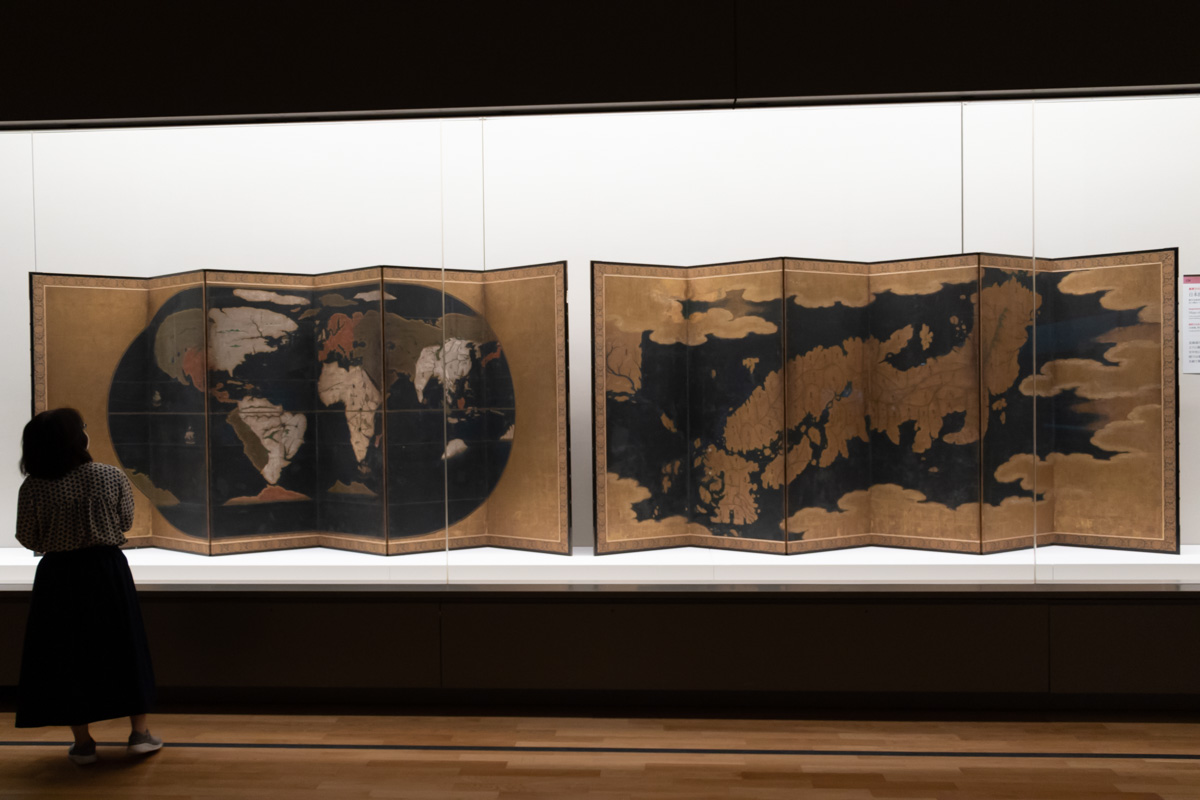
Important Cultural Property << Japanese Map / World Map Byobu >> Azuchi-Momoyama-Edo period, 16th-17th century early exhibition

Important Cultural Property << Statue of St. Francis Xavier >> Edo period, 17th century Hyogo, Kobe City Museum Exhibited from October 6th to 25th
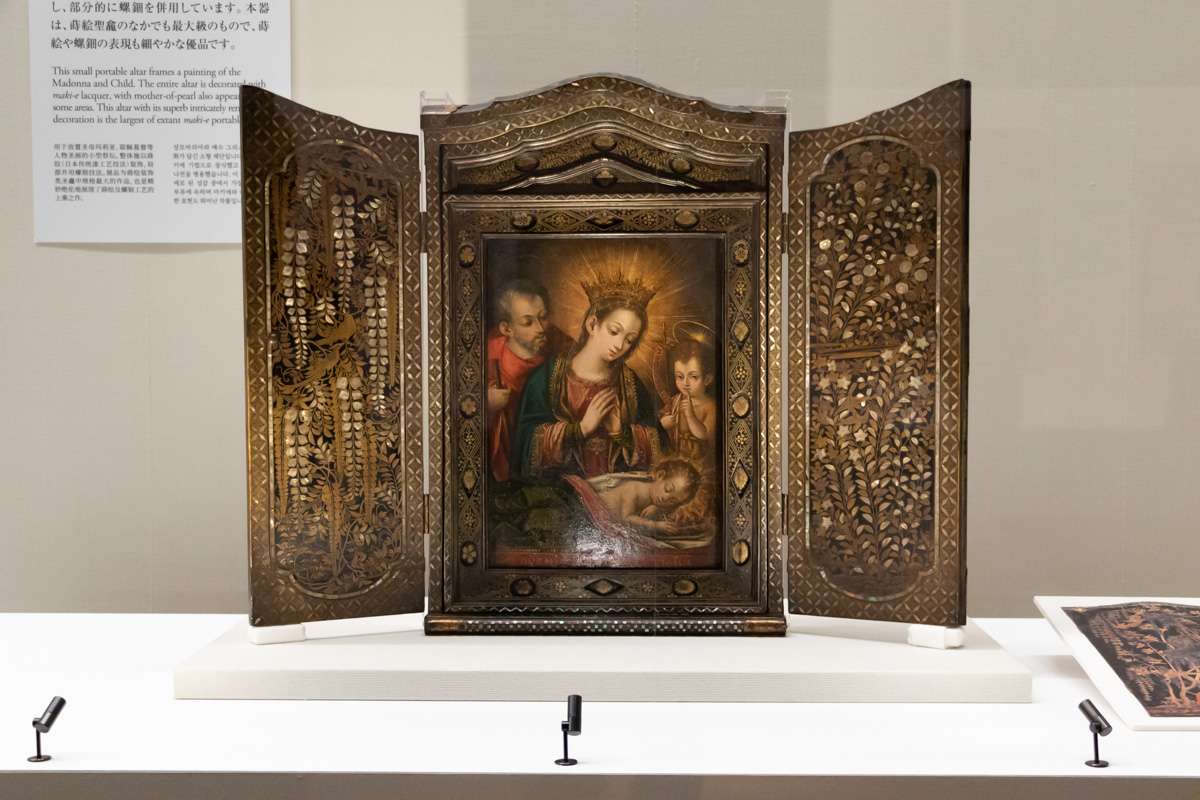
Important Cultural Property 《Kacho Makie Raden Mihrab》 Azuchi-Momoyama period, 16th century Kyushu National Museum Early exhibition
The one that caught my eye was "Kacho Makie Raden Niche". It is written as Mihrab and read as "Seigan". A niche is a collection of Christian iconic paintings, and this is one of the Nanban arts exported overseas.
The roof, frame, and other areas that can be seen from the front are densely decorated with patterns, but the flower and bird patterns that are drawn to fill the double doors are so beautiful that you can't say anything about them. It is a work with endless highlights together with the tempera painting inside.
In addition to the genres we picked up, there are also pottery related to Sen no Rikyu, the master of tea ceremony, such as "Gourd Flower Yan Hui" and "Kuroraku Tea Ceremony Kamuro" (both exhibited in the previous term). Clothes such as "Kosode Dyed Rinzu Rinzu Kosode Marumatsu Kaede Pattern" (exhibited for the entire period), etc., where you can see the transitional design that gradually changes from a design that emphasizes steps and streaks to a pictorial design.
There were so many things to see that time passed in a blink of an eye.

Important Cultural Property [Book] Hon'ami Koetsu Brush [Picture] Tawaraya Sotatsu Brush << Tsurushita E 36 Kasen Wakamaki >> Edo period, 17th century Kyoto National Museum Early exhibition A masterpiece of a picture scroll that expands the unique aesthetic world. It is gracefully drawn as if the calligraphy and the gold and silver mud crane correspond.

Important Cultural Property Hon'ami Koetsu 《Children's Maki-e Shelf》 Edo period, 17th century Tokyo National Museum full-term exhibition A lacquer ware shelf with the motif of “Genji Monogatari”, whose bold design composition is eye-catching. The lacquer work on the side is like a star.
Extensive museum goods
Be sure to check out the museum goods section before you return home. A wide range of items such as interior goods, T-shirts, and daily necessities with the motif of the exhibited works were available.

Miniature Rakuchu with motifs such as "Rakuchu Rakugai Zoufu" and "Hinozu Rakuchu"

A military commander's mini memo set designed in an 8-bit style
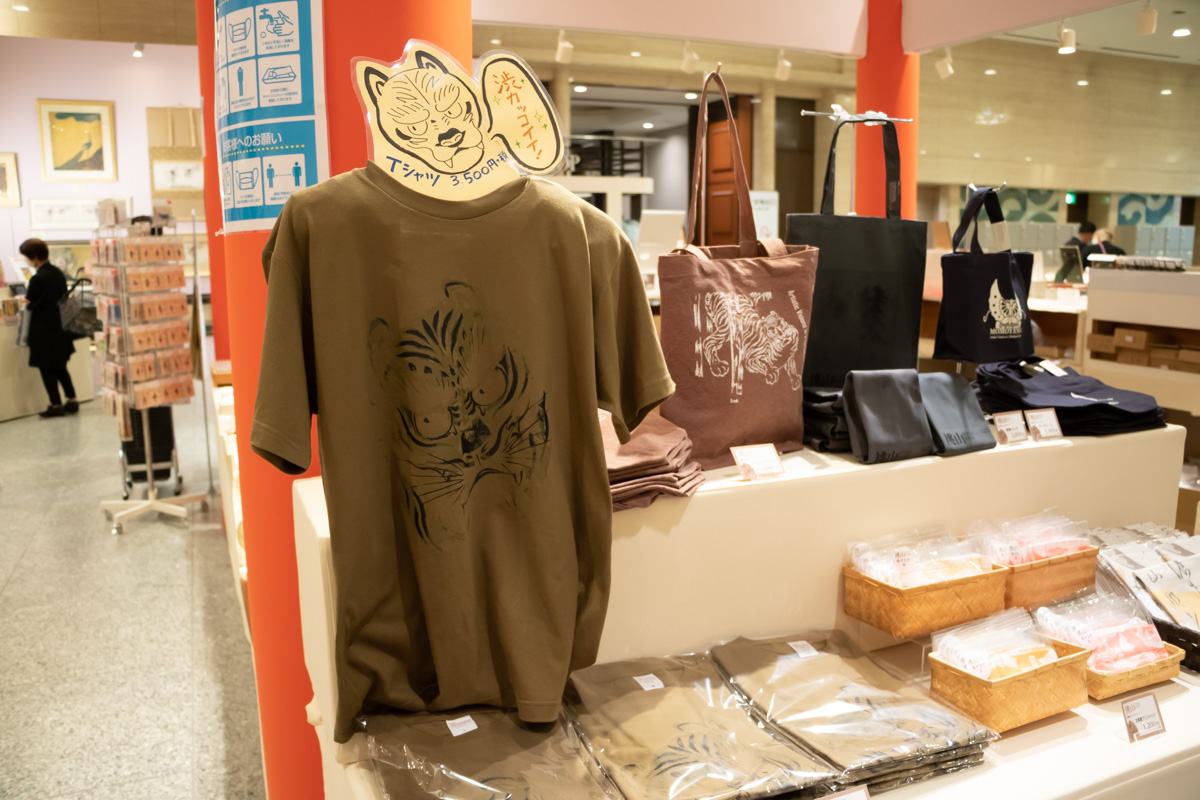
T-shirts and tote bags designed with the tiger of "Dragon Tiger Figure Bag"
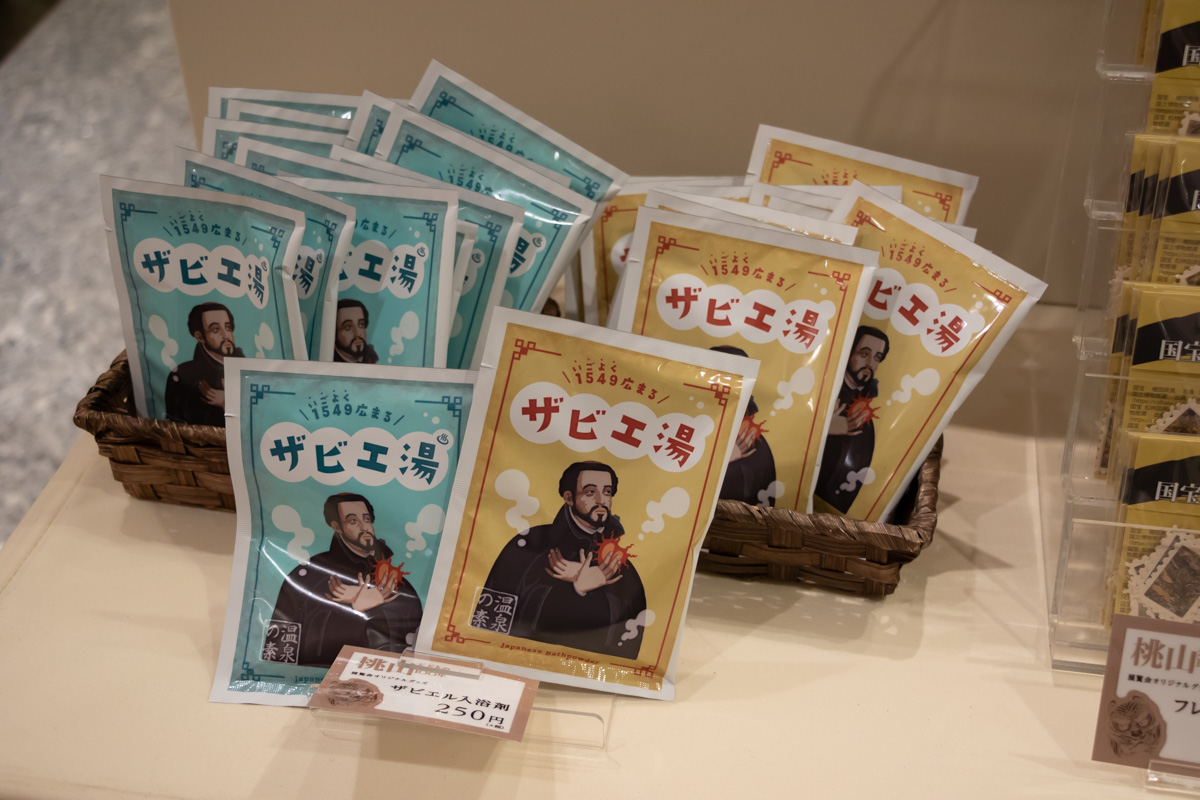
Xavier bath salt, which is an exhibition original goods (What is Xavier bath salt …?)
The special exhibition "Momoyama-100 Years of the World" will be held until November 29th (Sun).
Please note that due to the new coronavirus infection control, it is a complete advance reservation and time designation system.
A valuable exhibition of famous gems from all over the country. Please come visit us in the fall of art.
Outline of the event
* Complete advance reservation system / time designation system
| Exhibition name | Special exhibition "Momoyama-100 years of the world" |
| Session | October 6th (Tuesday) -November 29th (Sunday), 2020 ◇ First half exhibition: October 6th (Tuesday) -November 1st (Sunday) ◇ Late exhibition: November 3 (Tuesday / holiday) -November 29 (Sunday) |
| closing day | Monday (however, November 23 [Monday / holiday] is open), November 24 (Tuesday) |
| Opening hours | 9:30 am to 6:00 pm * Open until 9 pm on Fridays and Saturdays |
| Venue | Tokyo National Museum Heiseikan |
| Admission fee | General 2,400 yen University student 1,400 yen High school student 1,000 yen * All tax included |
| Organizer | Tokyo National Museum, Yomiuri Shimbun, Agency for Cultural Affairs |
| Official site | https://tsumugu.yomiuri.co.jp/momoyama2020/ |
<Reference Material> Yomiuri Shimbun "Special Exhibition" Momoyama-100 Years of the World "Catalog"


